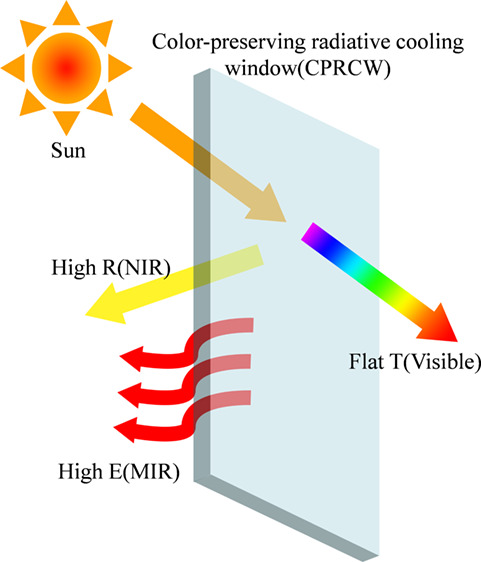- Record: found
- Abstract: found
- Article: found
Optimization of Dielectric-Metal Multilayer Structure for Color-Preserving Radiative Cooling Window

Read this article at
Abstract

Radiative cooling window has been designed to emit infrared radiation in the atmospheric transparency window and reflects near-infrared light while allowing visible light to pass through. However, improvements are still needed in the transmissivity of visible light, the reflectivity of near-infrared light, and emissivity of mid-infrared spectra. This paper proposes a color-preserving radiative cooling window consisting of a multilayer film as a transparent near-infrared reflector and polydimethylsiloxane (PDMS) as a thermal emitter. This design involves optimizing the types of film materials, the number of layers, and the thicknesses of the films through a genetic algorithm. The performance of multilayer films with various layer numbers is compared, and we choose 7-layer multilayer film (Al 2O 3/Ag/Al 2O 3/Ag/Al 2O 3/Ag/Al 2O 3) as the transparent near-infrared reflector. Then, we analyze its spectral characteristics in depth. Sequentially, we place a 100-μm-thick PDMS as a thermal emitter above the transparent near-infrared reflector. By combining the transparent near-infrared reflector with the PDMS and utilizing genetic algorithm, a color-preserving radiative cooling window has been achieved with flat and broadband average visible transmittance (86%), high average near-infrared reflectance (86%), high average thermal emissivity (95%) in the atmospheric window, and the drop of temperature (22.3, 21.2, and 15.8 K when nonradiative heat coefficient is, respectively, 0, 6, and 12 W/m 2/K).
Related collections
Most cited references51
- Record: found
- Abstract: found
- Article: not found
Passive radiative cooling below ambient air temperature under direct sunlight.

- Record: found
- Abstract: found
- Article: found
Effects of fossil fuel and total anthropogenic emission removal on public health and climate
- Record: found
- Abstract: not found
- Article: not found